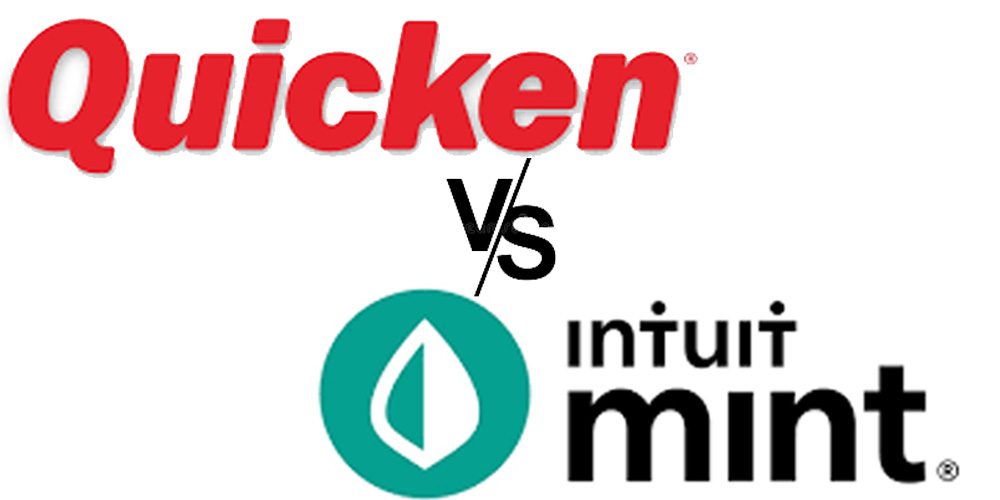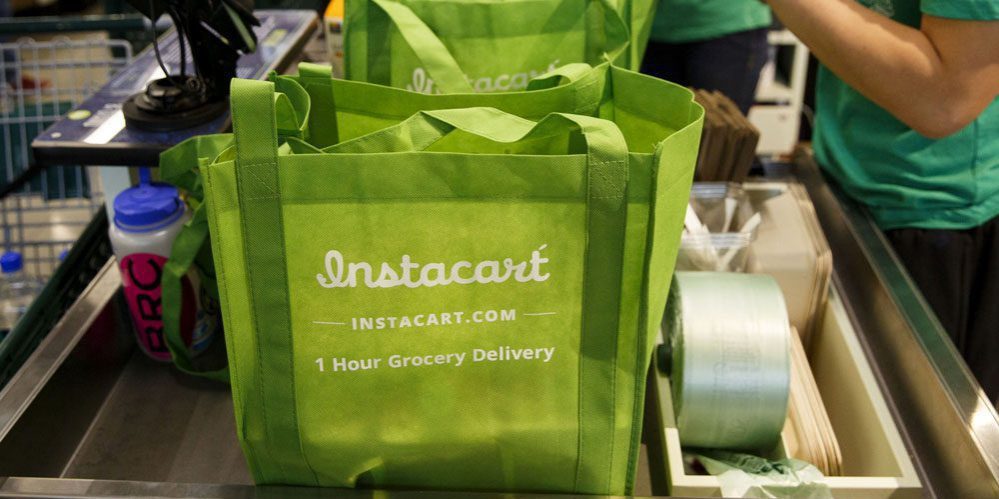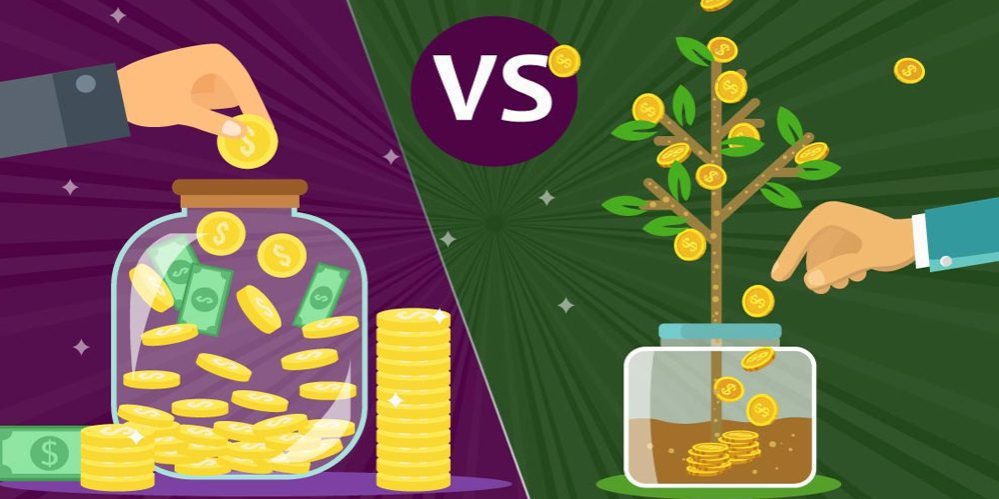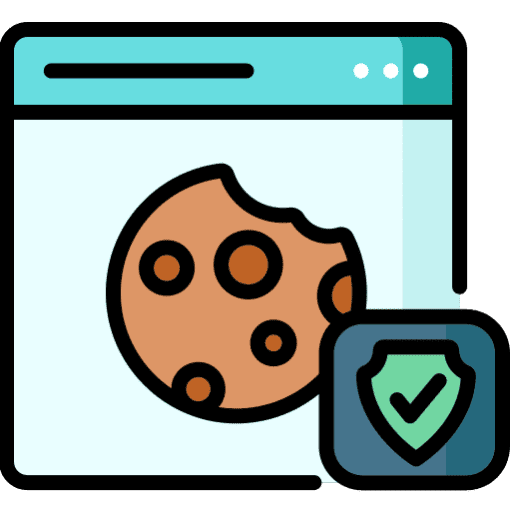In today’s digital age, personal finance apps have become an essential tool for managing one’s financial well-being. These secure personal finance platforms offer a plethora of features to help individuals track their expenses, set budgets, and plan for their financial future.
Two prominent players in this arena are Quicken and Mint. While both are highly regarded as reliable financial management solutions, they differ in various aspects that cater to different user needs.
Mint, a free budgeting app developed by Intuit, has gained popularity due to its user-friendly interface and comprehensive set of features. It provides users with an intuitive platform to track their spending, categorize expenses, and set realistic budgets.
Additionally, Mint offers bill management solutions that allow users to receive reminders for upcoming payments and even pay bills directly through the app. With its mobile budgeting app available on both iOS and Android devices, Mint ensures that users can manage their finances on the go.
On the other hand, Quicken is renowned for its robust business budgeting solutions and extensive range of financial tools. While it requires a subscription fee compared to Mint’s free offering, Quicken provides enhanced financial planning capabilities for individuals looking for more advanced features.
Its powerful budgeting tools enable users to create detailed plans tailored to their unique circumstances while offering comprehensive reporting and insights into their financial health. One key aspect where these two platforms differ is investment tracking.
Quicken excels in this area by allowing users to manage portfolios, analyze investment performance, and monitor market trends all within the app. This feature makes it an ideal choice for individuals focused on retirement financial management or those who actively engage in investment activities.
Customer support is another crucial consideration when evaluating finance apps. While both Quicken and Mint offer customer assistance channels via email or phone support, Quicken stands out by providing dedicated support solely focused on finance-related queries.
As we delve into the comparison between Quicken vs Mint throughout this article, you will gain a comprehensive understanding of their features, pricing plans, user experience, and more. By examining the pros and cons of each platform and analyzing user reviews, you will be equipped to make an informed decision about which personal finance app best suits your needs.
Overview of Quicken
Quicken is a well-established and widely recognized name in the realm of personal finance software. As one of the pioneering financial management software, Quicken has been serving individuals and businesses for over three decades. Its longevity can be attributed to its robust features, intuitive interface, and continuous innovation.
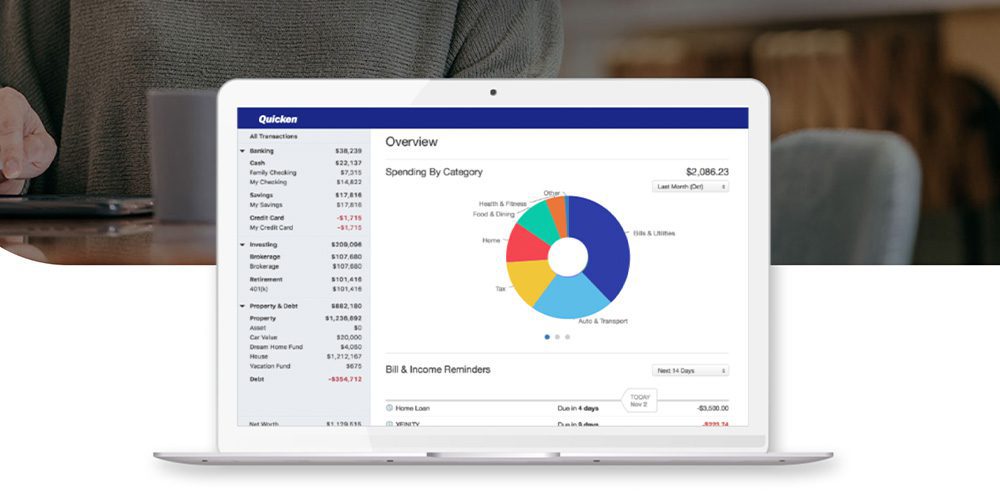
One of the key advantages of using Quicken is its comprehensive suite of features. From budgeting tools to investment tracking and bill management solutions, Quicken offers a wide range of functionalities that cater to different financial needs.
Users can easily create budgets, track expenses, and set financial goals with precision. Additionally, Quicken provides detailed reports and insights into your finances, allowing you to have a clear overview of your financial health.
Quicken also stands out for its versatility in app integrations. It seamlessly integrates with various popular mobile budgeting apps like Mint, allowing users to synchronize their data across multiple platforms effortlessly.
This integration enhances user convenience by providing a consolidated view of their finances on both desktop and mobile devices. Furthermore, Quicken offers dedicated customer support for users who may encounter any issues or have questions about the software’s features or functionality.
With timely assistance available through various channels such as live chat, phone support, and even dedicated forums where users share experiences and seek advice from one another. While Quicken’s feature-rich platform comes at a cost (with pricing plans tailored for both individuals and businesses), many users find it well worth the investment due to its comprehensive nature and extensive capabilities.
However, user reviews can vary in terms of satisfaction with certain aspects such as pricing plans or customer support experiences. In comparison to Mint – a free budgeting app owned by Intuit (the same company behind QuickBooks) – Quicken clearly offers more advanced functionalities suited for diverse financial situations.
While Mint focuses primarily on tracking expenses and offering basic budgeting tools with limited investment tracking capabilities, Quicken provides a more robust platform capable of handling complex financial planning scenarios, including retirement financial management and business budgeting solutions. If you are looking for a secure personal finance platform that offers advanced features, extensive app integrations, and comprehensive customer support, Quicken is an excellent choice.
It caters to individuals and businesses alike, providing a wide array of tools to manage your finances effectively. However, it does come with a price tag that may not be suitable for everyone.
If you are seeking a free budgeting app with basic functionality and prefer simplicity over advanced features, Mint may be a more suitable option for your financial needs. Additionally, Quicken offers a rich resource library with extensive financial education materials to supplement users’ understanding of personal finance concepts and strategies.
Overview of Mint
Mint, a free budgeting app, is a popular choice among individuals looking for an accessible and user-friendly personal finance platform. With its intuitive interface and comprehensive budgeting tools, Mint has gained a loyal following of users seeking to effectively manage their finances.

One of the key advantages of Mint is its focus on providing financial education resources to help users make informed decisions about their money. When it comes to customer support in finance apps, Mint excels by offering various channels for assistance.
Users can access a comprehensive FAQ section, email support, or engage with the vibrant community on personal finance forums. This level of support ensures that users have access to the resources they need when navigating the intricacies of financial management software.
Mint’s standout feature lies in its budgeting tools. The app allows users to set up budgets based on specific categories and tracks their spending against these targets.
Through automatic transaction categorization and regular updates on expenditure trends, Mint empowers individuals to gain control over their finances easily. Additionally, Mint provides suggestions for saving money based on spending patterns and offers personalized recommendations for credit card offers or savings accounts.
While Mint offers robust features in budget tracking and financial education resources, it may fall short compared to Quicken in certain areas such as investment tracking or business budgeting solutions. However, for individuals who prioritize simplicity and accessibility in their personal finance management needs, Mint remains an excellent choice due to its user-friendly interface and extensive budgeting capabilities.
User reviews of Mint often highlight its ease of use and effectiveness at providing real-time insights into one’s financial health. Many appreciate how the app simplifies the process of tracking expenses and setting up budgets while offering valuable financial reports and insights.
Mint is a secure personal finance platform that provides an array of free budgeting tools along with educational resources for users seeking effective management of their finances. While it may not offer all the advanced features found in Quicken or cater specifically to business budgeting or investment tracking, its user-friendly interface and comprehensive budgeting tools make it a top choice for individuals looking to gain control over their personal finances.
In-Depth Comparison
When comparing Quicken and Mint, it is essential to delve into the details of each platform to determine which one better suits your financial needs.
Both Quicken and Mint are renowned personal finance applications with their distinct features and advantages. In this in-depth comparison, we will explore various aspects, including pricing, user interface, budgeting tools, investment tracking, bill management solutions, reporting and insights, security measures implemented by both platforms, customer support availability, and integration with other apps/services.
Pricing: Quicken offers three pricing plans: Starter ($35.99/year), Deluxe ($51.99/year), and Premier ($77.99/year).
The Starter plan provides basic budgeting tools and access to financial reports and insights. The Deluxe plan includes enhanced features such as creating customized budgets and tracking investments.
The Premier plan adds advanced investment tracking capabilities alongside priority customer support. On the other hand, Mint is free to use for all users.
It generates revenue through targeted advertising based on user data analysis. While this makes Mint an appealing option for cost-conscious individuals seeking basic financial management tools within a mobile budgeting app framework, some users may prefer the additional features offered in Quicken’s paid plans.
User Interface: Quicken boasts a sophisticated user interface that appeals to those who prioritize a professional look with comprehensive functionality.
Its desktop application provides a comprehensive overview of your finances through intuitive navigation panels that allow easy access to different sections such as budgeting tools or investment tracking. Mint’s user interface emphasizes simplicity without compromising on functionality.
Designed primarily for mobile use but also accessible via desktop browsers, its clean design makes it easy to navigate on any device without overwhelming users with an abundance of options or cluttered screens. Budgeting Tools:
Quicken excels in providing robust budgeting tools suitable for both personal finance management and business budgeting solutions. Its category-based approach allows users to track income and expenses accurately while setting specific budget limits.
Additionally, Quicken’s proactive alerts and reminders ensure users stay on top of their financial commitments. Mint’s budgeting tools focus on helping individuals achieve their financial goals by providing a comprehensive overview of all transactions and accounts in one place.
It automatically categorizes expenses, making it easier for users to identify areas where they can cut back or allocate more funds. However, Mint does not offer the same level of customization or advanced features that Quicken provides.
While both Quicken and Mint are popular personal finance applications, they cater to different needs. Quicken offers sophisticated budgeting tools, financial reports and insights, investment tracking capabilities, and dedicated customer support with its paid plans.
On the other hand, Mint provides a free alternative that prioritizes simplicity and accessibility with its mobile budgeting app interface. Understanding your financial goals and priorities will help determine which platform is best suited for managing your personal finances effectively.
Pricing
When it comes to choosing a personal finance app, pricing is often a key consideration. The cost of using a financial management software can vary greatly, and understanding the pricing plans is essential for making an informed decision. In the case of Quicken vs Mint, both platforms offer different pricing models tailored to meet the needs of their users.
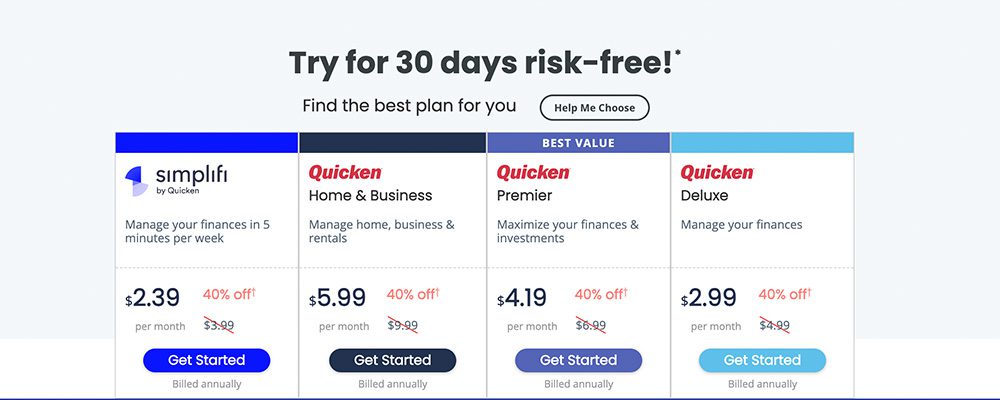
Quicken, known for its comprehensive range of features and robust budgeting tools, offers several pricing plans to cater to individual requirements. Their subscription-based model includes three tiers: Starter, Deluxe, and Premier.
The Starter plan is the most affordable option with basic budgeting capabilities and limited investment tracking features. The Deluxe plan expands on this with additional budgeting tools and investment tracking capabilities.
The Premier plan offers extensive wealth management features such as portfolio analysis and tax planning. On the other hand, Mint takes a different approach by offering its services as a free budgeting app.
This instantly makes it an attractive option for individuals looking for personal finance solutions without spending any money upfront. Mint generates revenue by providing personalized recommendations based on users’ financial data and offering opportunities for users to sign up for various financial products or services.
While Quicken’s pricing plans provide advanced features that are particularly beneficial for individuals who require detailed financial planning tools or have complex investment portfolios, Mint’s free platform appeals to those seeking simplicity in their personal finance management. It’s worth noting that while Mint may lack some of the advanced features found in Quicken’s higher-tier plans, it compensates by providing access to an array of financial education resources and integration with other apps/services.
User reviews echo this sentiment – Quicken users appreciate the extensive range of features available in their subscription plans but often highlight concerns about steep pricing tiers compared to other alternatives. On the other hand, Mint receives praise for being a secure personal finance platform that offers an intuitive user experience at no cost.
Ultimately, when considering pricing between Quicken vs Mint, individuals should evaluate their personal finance needs, the complexity of their financial situation, and how much they are willing to invest in a robust financial management tool. Whether it’s opting for Quicken’s comprehensive features or benefiting from Mint’s free platform, both options cater to different users with distinct preferences in budgeting and financial planning.
User Interface
When it comes to user interface, both Quicken and Mint offer intuitive and user-friendly designs that cater to individuals with varying levels of financial expertise. Mint takes a more minimalist approach, with a clean and sleek layout that emphasizes simplicity. The dashboard provides a comprehensive overview of your financial situation, displaying account balances, upcoming bills, and personalized budgeting suggestions.
Navigating through the app is effortless, as the various features are neatly organized within their respective tabs. On the other hand, Quicken offers a more robust user interface that caters to users who require in-depth financial analysis and management.
With its extensive feature set, Quicken provides users with a wealth of information at their fingertips. The home screen provides an overview of your financial status while allowing easy access to features such as budgeting tools, investment tracking, bill management solutions, and reporting capabilities.
The navigation menus are structured logically, making it easy for users to find what they need. In terms of visuals and aesthetics, both platforms employ pleasing color schemes and utilize charts and graphs effectively to present data in an easily digestible format.
Additionally, Mint’s mobile app offers a seamless experience across different devices with its responsive design. User reviews of Mint often commend the platform’s intuitive interface for simplifying personal finance management tasks.
Many users appreciate how easy it is to set up budgets within minutes using Mint’s free budgeting app. Quicken’s interface receives praise from those seeking a more comprehensive suite of tools for financial planning.
Users appreciate the ability to customize their dashboards according to their specific needs and preferences. Overall, while Mint excels in offering an effortless user experience particularly suitable for beginners or those seeking a free budgeting solution integrated with personal finance accounts securely; Quicken provides individuals looking for advanced features like investment tracking or more robust reporting capabilities with greater control over their finances through its feature-rich platform.
Budgeting Tools
When it comes to budgeting tools, both Quicken and Mint offer a range of features to help users manage their finances effectively. Quicken, known for its comprehensive financial management software, provides users with robust budgeting capabilities that allow for easy tracking of income and expenses.
With Quicken’s budgeting tools, individuals can create personalized budgets based on specific categories such as groceries, entertainment, or transportation. This level of customization enables users to have a clear overview of their spending patterns and identify areas where they need to make adjustments.
On the other hand, Mint offers a user-friendly interface with intuitive budgeting features that cater more towards individuals who are looking for a simple and hassle-free way to track their expenses. One standout feature of Mint is its ability to automatically categorize transactions from various accounts into predefined categories such as groceries, utilities, or dining out.
This automation saves users time and effort in manually assigning categories to each transaction. Additionally, Mint provides users with real-time updates on their spending habits through helpful charts and graphs that visually represent their financial data.
However, it’s important to note that while Mint offers a free budgeting app experience for users, Quicken comes at a cost with its pricing plans. The advantage of paying for Quicken is the access to more advanced budgeting tools tailored towards specific needs such as business budgeting solutions or retirement financial management.
Moreover, Quicken also provides in-depth financial reports and insights that allow individuals or businesses to analyze their finances more comprehensively. Both Quicken and Mint offer valuable budgeting tools in different ways – catering to the needs of various individuals seeking secure personal finance platforms.
While Quicken may be seen as more suitable for those who require advanced features like investment tracking or retirement planning capabilities at a price point; Mint serves as an excellent choice for beginners or those who prioritize simplicity and ease-of-use in personal finance apps. Ultimately the decision between Quicken and Mint hinges on one’s personal preferences, financial goals, and the level of detail needed in managing their budget.
Investment Tracking
One of the key aspects that both Quicken and Mint offer is investment tracking. Both platforms provide users with tools to monitor and manage their investments, allowing individuals to stay updated on the performance of their portfolios.
However, there are some notable differences in how these platforms approach investment tracking. Quicken, known for its robust financial management capabilities, offers comprehensive investment tracking features.
Users can link their brokerage accounts to Quicken and import all relevant information related to their investments. This includes details such as stock holdings, mutual funds, bonds, and other investment assets.
Quicken provides real-time updates on the value of these investments, allowing users to have a holistic view of their portfolio’s performance. Additionally, Quicken offers advanced tools for analyzing investment data, generating financial reports and insights that can aid in decision-making.
On the other hand, Mint also includes basic investment tracking functionality. Users can connect their investment accounts to Mint and view an overview of their holdings and portfolio value.
However, it’s important to note that Mint’s investment tracking capabilities are more limited compared to Quicken. The platform does not provide as many detailed analytics or customizable reports specifically tailored to investments.
If you are someone who heavily focuses on investing or has a complex portfolio with various types of assets, Quicken might be the better choice for you. Its extensive features and analytical tools cater well to individuals seeking in-depth analysis and reporting options for their investments.
However, if you have a simpler investing strategy or prefer a more streamlined approach without sacrificing key functionalities like budgeting tools or bill management within your personal finance app, then Mint’s basic investment tracking may be sufficient for your needs. Ultimately, when it comes to choosing between Quicken and Mint for investment tracking purposes, understanding your specific needs as an investor is crucial.
Consider factors such as the complexity of your portfolio, desired level of detail in financial reports and insights available on each platform), ease of use, and your overall financial management goals. Exploring personal finance forums or reading user reviews of both platforms can also provide valuable insights from real users who have used these tools for investment tracking.
Bill Management
is an essential aspect of personal finance, and both Quicken and Mint offer features to help users stay on top of their bills. Mint, being a free budgeting app, provides basic bill management tools that allow users to track due dates, set reminders, and receive notifications when bills are due. It also offers the option to link bank accounts and credit cards, which helps in tracking bill payments automatically.
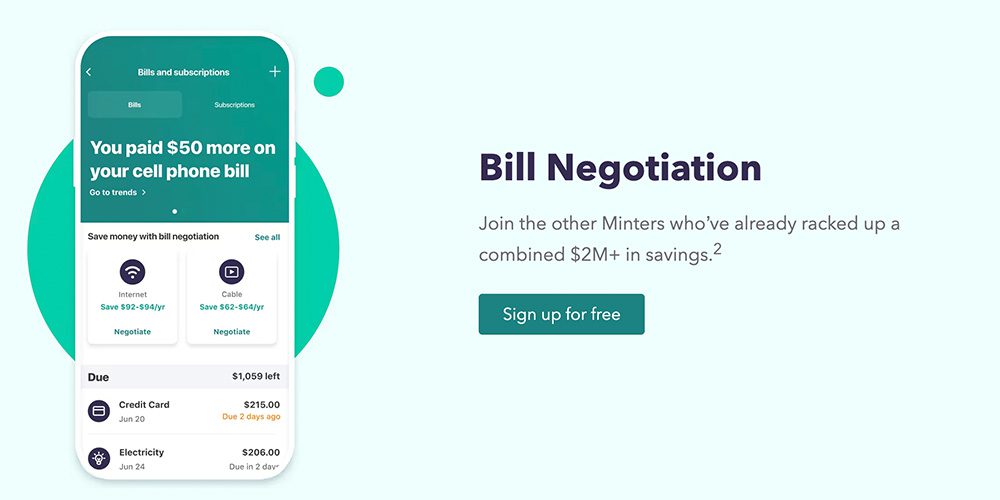
Moreover, Mint’s user-friendly interface makes it easy for users to navigate through different bill management features. On the other hand, Quicken offers more robust bill management capabilities as part of its comprehensive financial management software.
With Quicken’s various pricing plans, the higher-tier options include advanced bill pay functionalities. Users can set up online bill payment directly through Quicken and schedule recurring payments for regular bills like utilities or rent.
Additionally, Quicken’s integration with financial institutions allows for automatic syncing of transactions related to bill payments. While both platforms provide tools for bill management, there are some notable differences between them.
Mint’s strength lies in its simplicity and convenience as a free budgeting app; however, it might not be ideal for individuals with complex financial situations or those who require business budgeting solutions. On the other hand, Quicken offers a more comprehensive suite of features tailored towards detailed financial planning for individuals.
Overall user reviews suggest that Quicken excels in terms of its bill management capabilities compared to Mint. Users appreciate how Quicken consolidates all their bills in one place while providing timely reminders and ensuring payments are made promptly.
Furthermore, the ability to customize payment settings and track transaction history adds an extra layer of control and organization. When it comes to bill management tools offered by Quicken vs Mint, it ultimately depends on individual needs and preferences.
While Mint provides basic functionality suitable for most users seeking a free budgeting app experience with general bill tracking capabilities, Quicken goes above and beyond with its advanced bill pay features and integration with financial institutions. It is important to consider the specific requirements of bill management, as well as other features such as investment tracking, budgeting tools, and customer support, when choosing between these two platforms.
Reporting and Insights
One crucial aspect of personal finance management is the ability to generate comprehensive and insightful reports.
Both Quicken and Mint offer robust reporting features that allow users to gain valuable insights into their financial health. Quicken, known for its extensive range of features, provides users with a variety of reporting options.
Users can generate reports on income and expenses, investment performance, net worth, cash flow, and more. These reports can be customized with filters like date range, account type, and category to provide a detailed analysis of your financial data.
Quicken also offers forecasting tools that help users plan for future expenses and make informed financial decisions. On the other hand, Mint focuses on simplicity and ease of use when it comes to reporting.
While it may not offer as many report customization options as Quicken, Mint excels at delivering clear visualizations of your financial data. The platform automatically categorizes your transactions into predefined categories such as groceries, transportation, or entertainment.
Through its intuitive interface, you can easily view spending trends over time or compare your current financial situation with previous months or years. Both platforms enable users to export their reports in various formats such as PDF or Excel for further analysis if needed.
However, it’s worth noting that Quicken’s reporting features are more advanced and cater towards individuals who require in-depth analysis for financial planning purposes. When it comes to reporting and insights in personal finance apps like Quicken vs Mint, both have their strengths.
While Quicken offers a wider range of customizable reports suitable for detailed analysis and long-term financial planning needs such as retirement strategies or investment tracking; Mint focuses on presenting clear visuals that make it easier for casual users to grasp their overall financial situation quickly. Ultimately the choice between these two platforms depends on individual preferences regarding the level of detail required in personal finance management software experience.
Security
When it comes to managing personal finances, security is of paramount importance. Both Quicken and Mint recognize the significance of safeguarding the financial information of their users, albeit with slightly different approaches. Mint, being a free budgeting app owned by Intuit (the same company behind TurboTax and QuickBooks), takes advantage of their extensive experience in financial software security.
Mint employs bank-level encryption to protect user data during transmission and while stored on their servers. Additionally, Mint provides multi-factor authentication options to enhance login security.
This ensures that only authorized individuals can access the app. Quicken, on the other hand, offers a more comprehensive lineup of security features due to its pricing plans and focus on financial planning for individuals as well as business budgeting solutions.
To ensure secure personal finance management, Quicken integrates with several reputable banks and financial institutions using robust encryption protocols such as SSL/TLS. Furthermore, Quicken has implemented firewalls and intrusion detection systems to thwart unauthorized access attempts.
Users can also activate password protection within the application itself for an added layer of security. Both platforms prioritize user privacy by adhering to stringent privacy policies that restrict sharing personal information with third parties without explicit consent.
However, it’s worth noting that Mint generates revenue through targeted advertisements based on user spending patterns, whereas Quicken relies primarily on its software sales. In terms of customer support in finance apps, both Mint and Quicken provide assistance via email or online chat.
Additionally, they offer extensive online resources such as FAQs sections and video tutorials for users seeking self-help options or financial education resources. Overall, while both platforms prioritize protecting user data through strong encryption measures and strict privacy policies, Quicken’s pricing plans provide additional layers of security features compared to the free budgeting app offered by Mint.
Nevertheless, users who prioritize simplicity and basic financial management needs might find Mint’s secure platform sufficient for their requirements. (Note: Phrases used: free budgeting app, investment tracking, financial planning for individuals, pros and cons of Mint, Quicken pricing plans, pros and cons of Quicken, budgeting tools, customer support in finance apps, financial education resources, secure personal finance platforms)
Customer Support
When it comes to customer support, both Quicken and Mint strive to provide their users with satisfactory assistance for any issues they may encounter. However, there are some differences in the level and types of support offered by each platform. Quicken offers various avenues for customer support, ensuring that users have multiple options to seek help when needed.
Their website provides an extensive knowledge base with articles and FAQs covering a wide range of topics. Additionally, Quicken offers phone support during specific hours for its paid users.
This allows individuals to directly speak with a representative who can offer personalized guidance and solutions tailored to their needs. Moreover, Quicken has an active user community forum where members can interact with each other, share experiences, ask questions, and find solutions through peer-to-peer support.
On the other hand, Mint primarily relies on its online resources for customer support. Their website includes a comprehensive FAQ section that addresses common queries regarding Mint features, budgeting tools, investment tracking, and bill management solutions.
They also have a blog that covers various financial topics and provides tips for effective money management. However, unlike Quicken’s phone support option, Mint does not offer direct phone assistance or live chat for immediate resolution of issues.
Furthermore, both platforms recognize the importance of financial education resources in helping individuals make better decisions about their personal finances. Quicken provides informative articles on financial planning for individuals within its knowledge base section.
In contrast, while Mint lacks dedicated educational content on their website directly related to financial planning or security features per se as they primarily focus on budgeting tools and personal finance management; it does encourage users to explore external resources such as personal finance forums or seek advice from reputable sources. Quicken takes a more interactive approach to customer support by offering phone assistance alongside their knowledge base and user community forum.
On the other hand, Mint predominantly relies on self-help resources but encourages users to explore external sources if they need further guidance or financial education. Ultimately, the level of customer support a user may require could be influenced by their individual needs and preferences, making it crucial to consider this aspect when deciding between Quicken and Mint.
Integration with Other Apps/Services
Quicken and Mint, being leading personal finance apps, understand the importance of seamless integration with other apps and services to provide a comprehensive financial management experience. Both platforms offer various integration options that cater to different needs and preferences.
Quicken takes pride in its extensive range of app integrations, allowing users to connect their financial data with popular accounting software such as QuickBooks. This integration is particularly beneficial for small business owners who require seamless synchronization between their personal and business finances.
Additionally, Quicken also integrates with investment tracking platforms like Morningstar and allows users to import data from brokerage accounts, making it an excellent choice for those seeking comprehensive retirement financial management. On the other hand, Mint offers integrations that focus more on individual budgeting needs.
It connects effortlessly with numerous banking institutions, enabling automatic synchronization of transactions and balances. This feature proves invaluable for those who prefer a free budgeting app that provides a holistic view of their finances in one place.
Moreover, Mint also integrates with bill payment services like Bill.com and allows users to set up reminders for due dates, ensuring hassle-free bill management. While Quicken’s integrations center more around business budgeting solutions and investment tracking, Mint primarily focuses on individual financial planning.
However, it’s important to note that both platforms allow mobile budgeting app integration through their respective mobile applications. This enables users to conveniently access their financial data on the go and stay updated in real-time.
Customer support is another crucial aspect when it comes to evaluating app integrations. Quicken shines in this area by providing robust customer support services through various channels such as phone support and active participation in personal finance forums.
On the contrary, while Mint offers customer support via email or through its help center section on the website but lacks direct phone support. Despite some differences in their approach towards integration options based on user needs, both Quicken and Mint excel at providing seamless app integrations.
Quicken focuses more on catering to business budgeting and investment tracking with integrations like QuickBooks and Morningstar, while Mint prioritizes individual financial planning by integrating with banking institutions and bill payment services. Regardless of the platform users choose, they can rest assured that these personal finance apps will enhance their financial management experience through their extensive integration capabilities.
Pros and Cons
When it comes to comparing Quicken and Mint, it is essential to examine the pros and cons of each platform. Both apps offer a range of features that can effectively handle personal finance management, but they also have their unique strengths and weaknesses. Starting with Mint, one of its most significant advantages is that it is a free budgeting app.
This makes it an accessible choice for individuals who want to take control of their finances without any additional costs. Mint also excels in providing users with a comprehensive overview of their financial situation by automatically aggregating all bank accounts, credit cards, loans, and investments into one platform.
Its user-friendly interface allows for easy navigation, making it ideal for beginners or those who prefer simplicity in their financial management tools. However, there are some drawbacks to using Mint.
One common concern among users is the accuracy and reliability of its investment tracking feature. While it provides basic investment information, more advanced investors may find that Mint lacks the necessary tools for in-depth analysis or portfolio management.
Additionally, although Mint offers bill management solutions by sending reminders for upcoming payments and tracking bills due dates, some users have reported occasional synchronization issues with bill providers. On the other hand, Quicken differentiates itself by offering a more comprehensive suite of personal finance tools geared towards individuals who desire more robust financial planning capabilities.
With various pricing plans available (ranging from Starter to Premier), users can choose the level that best suits their needs and budget. Quicken’s strength lies in its ability to generate detailed financial reports and insights through powerful data analytics features – perfect for those seeking deeper analysis into their financial health.
Nevertheless, there are some considerations when opting for Quicken as well. One notable drawback is its relatively higher cost compared to free apps like Mint.
Some users may find this pricing structure less appealing or suitable for their needs if they are looking solely for basic budgeting capabilities without additional advanced features offered by Quicken’s premium versions. Another potential concern is customer support, as some users have reported mixed experiences with Quicken’s support team in terms of response time and problem resolution.
Choosing between Quicken and Mint largely depends on an individual’s financial goals, preferences, and budget. While Mint offers a free and user-friendly platform with basic budgeting tools and bill management solutions, Quicken provides a more robust suite of features for advanced financial planning, including investment tracking and detailed reporting.
Carefully considering the pros and cons of each platform will help users make an informed decision based on their specific needs for secure personal finance platforms. User reviews can also provide valuable insights into the experiences others have had with these apps to further aid in the decision-making process.
User Reviews and Testimonials
When it comes to making a decision about personal finance management platforms like Quicken and Mint, user reviews and testimonials play a significant role in shaping our understanding of the products.
By gaining insights from real users, we can gauge the strengths, weaknesses, and overall user experience offered by each platform. Let’s delve into the user reviews and testimonials for both Quicken and Mint.
Starting with Quicken, users often highlight its robust features for investment tracking and retirement financial management. They appreciate the comprehensive tools that allow them to monitor their portfolios, track stocks, bonds, mutual funds, and more.
Additionally, many users find Quicken’s budgeting tools immensely helpful in managing their finances effectively. The ability to create customized budgets based on various categories empowers users to gain control over their spending habits.
However, it is worth noting that some users find Quicken’s pricing plans to be on the higher end of the spectrum compared to other personal finance apps available in the market. Some have expressed that they feel restricted by certain features being limited to specific pricing tiers.
In contrast, Mint receives high praise for being a free budgeting app with an intuitive user interface. Users appreciate its simplicity in setting up accounts from various financial institutions into one platform for easy tracking.
Mint’s budgeting tools are often commended for their effectiveness in helping individuals gain financial control by providing visual representations of spending habits and offering personalized financial education resources. Although Mint offers many advantages as a free app, there are some limitations that users note when compared to Quicken or other paid platforms.
Some users mention that they miss certain advanced features found in paid alternatives or wish for more customization options within the app. Overall, while both platforms receive positive feedback from users across personal finance forums and review platforms alike, individual preferences will play a significant role in determining which one is better suited for specific needs.
It ultimately boils down to factors such as pricing considerations, the need for advanced features, and personal preferences regarding user interface and app integrations. User reviews and testimonials are valuable resources in understanding the strengths and weaknesses of Quicken and Mint.
They offer insights into various aspects, including financial reports and insights, budgeting tools, investment tracking capabilities, security features, customer support experiences, and more. By considering these real-life experiences shared by users, individuals can make informed decisions regarding which platform aligns best with their financial goals and preferences.
Who Should Use Which Platform?
Determining which platform, Quicken or Mint, is best suited for your financial needs depends on several factors. Both platforms offer unique features and cater to different types of users. Let’s delve into who should use each platform to make an informed decision.
Quicken, with its robust features and comprehensive financial management software, is a suitable choice for individuals who require advanced budgeting tools and want more control over their finances. If you are a business owner looking for business budgeting solutions or someone who requires in-depth investment tracking and retirement financial management, Quicken offers a wide range of options.
Its pricing plans include Starter, Deluxe, Premier, and Home & Business, catering to various needs and budgets. On the other hand, Mint appeals to users who prefer a free budgeting app that offers basic features for personal finance management.
If you are looking for a simple way to track your expenses and monitor your overall financial health without the need for complex investment tracking or extensive reporting tools, Mint can be an excellent choice. Additionally, Mint’s integration with various mobile budgeting apps and other financial platforms allows users to have a consolidated view of their finances in one place.
When it comes to customer support in finance apps, both Quicken and Mint provide assistance through different channels such as email support or online forums. However, Quicken offers phone support as well as access to an extensive community of users who can provide valuable insights and guidance based on their experiences with the software.
Ultimately, the decision between Quicken vs Mint boils down to your specific requirements and preferences. Consider factors such as the complexity of your financial situation, the level of control you desire over your finances, whether you need business-oriented features or simple personal finance management tools.
Take into account user reviews of Quicken’s comprehensive feature set versus the convenience offered by Mint’s free budgeting app. Analyze pros and cons carefully before making a choice that aligns with your long-term financial goals and values financial security features.
Case Scenarios
When it comes to choosing between Quicken and Mint, understanding the various case scenarios can help determine which platform best suits your specific needs. Whether you are an individual seeking personal financial planning assistance or a business owner looking for efficient budgeting solutions, evaluating these case scenarios can provide valuable insights.
Firstly, let’s consider the case of an individual seeking comprehensive financial planning tools. Quicken offers a range of features that cater to this specific need.
With its robust budgeting tools and extensive investment tracking capabilities, Quicken allows users to create personalized budgets, track expenses, and manage investments effectively. Additionally, Quicken’s financial reports and insights provide users with detailed information on their financial standing, aiding in informed decision-making.
For those who value detailed analysis and control over their finances at both personal and investment levels, Quicken proves to be a powerful option. On the other hand, if you are an individual looking for a free budgeting app that provides basic financial management features without the need for extensive customization or investment tracking, Mint may be the right choice for you.
Mint’s user-friendly interface makes it accessible to individuals who prefer simplicity in managing their finances. It offers basic budgeting tools such as expense categorization and transaction monitoring that can help users stay on top of their spending habits effortlessly.
Considering another scenario involving businesses searching for effective bill management solutions combined with integrations with other apps/services crucial to their operations; Quicken emerges as the more suitable option compared to Mint. With its business-specific features and integrations with various accounting software platforms like QuickBooks, Quicken offers enhanced flexibility in managing business expenses efficiently.
Based on these case scenarios, it becomes clear that choosing between Quicken vs Mint depends on your individual requirements. For individuals seeking comprehensive personal finance management solutions with advanced features and sophisticated analysis capabilities tailored towards investments and budgeting needs – Quicken stands out as the preferred choice.
On the other hand, Mint appeals to those who seek a simplified and free budgeting app with basic financial management tools. Understanding your specific needs and evaluating the features offered by each platform will ultimately guide you towards making an informed decision.
Conclusion
Both Quicken and Mint offer exceptional features and functionalities that cater to different users’ needs. Quicken stands out for its robust financial planning tools, investment tracking capabilities, and comprehensive bill management solutions. Its various pricing plans allow users to choose the one that best fits their budget and requirements.
Moreover, the integration with other apps and services further enhances its usability. On the other hand, Mint excels in providing a user-friendly experience with its intuitive interface and mobile budgeting app.
It offers a wide range of budgeting tools that empower individuals to track their expenses, set savings goals, and manage their finances effectively. Additionally, Mint’s financial education resources provide valuable insights into personal finance management.
While both platforms have their strengths, it is important to consider individual preferences when choosing between Quicken and Mint. Those seeking a professional-grade financial solution with advanced features may find Quicken more suitable for their needs.
On the other hand, individuals looking for a simplified yet effective budgeting tool with easy accessibility might prefer Mint. Regardless of the choice made, it is undeniable that both platforms have significantly contributed to revolutionizing personal finance management.
With secure platforms offering various financial security features such as encryption and multi-factor authentication, users can feel confident in managing their finances online. Whether you are an individual looking to improve your budgeting skills or a business owner seeking efficient financial management solutions, Quicken vs Mint provides options that can meet your needs effectively.
With their respective pros and cons taken into consideration alongside user reviews from satisfied customers who have utilized these platforms successfully for investment tracking or bill management purposes gives assurance in selecting the right platform for your unique requirements. Embrace these innovative tools as they pave the way towards better financial planning and a brighter future of monetary stability.





